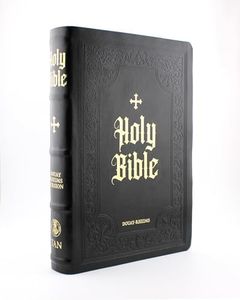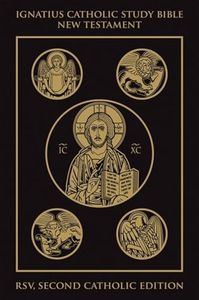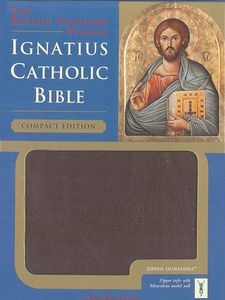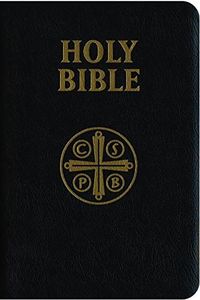We Use CookiesWe use cookies to enhance the security, performance,
functionality and for analytical and promotional activities. By continuing to browse this site you
are agreeing to our privacy policy
10 Best Catholic Bibles
From leading brands and best sellers available on the web.By clicking on a link to a third party's website, log data is shared with that third party.
Buying Guide for the Best Catholic Bibles
Choosing a Catholic Bible is a meaningful decision and can influence your reading experience, study, and spiritual growth. It's important to consider which translation, features, and design will be most supportive of your needs—whether it's daily reading, in-depth study, group discussion, or liturgical use. Understanding the differences between various editions will help ensure you select a Bible that feels comfortable to read and matches your preferences for use.TranslationTranslation refers to the way the original Biblical texts have been rendered into your language. This is important because different translations have unique styles, word choices, and levels of literalness or readability. For Catholic Bibles, look for translations approved by the Catholic Church, such as those including the Deuterocanonical books. Some translations are more formal and closer to the original languages, making them suitable for in-depth study, while others use everyday language for easier reading. If you prefer smooth, simple reading, choose a dynamic or thought-for-thought translation; for closer study or liturgical compliance, opt for a more literal or word-for-word translation.
Inclusion of Deuterocanonical BooksCatholic Bibles include certain books, known as the Deuterocanonical books, that are not found in all Christian versions. This is crucial because these books are part of the official canon for Catholics and are sometimes used in liturgical readings. When looking at options, check for the complete inclusion of these books, often labeled as 'Catholic Edition' or 'with Apocrypha.' Choose an edition with these books if you want a Bible for church use, study, or if you wish to follow the Catholic liturgy fully.
Study Helps and NotesMany Catholic Bibles offer extra features like footnotes, explanations, cross-references, and commentary. These can help you better understand difficult passages or provide context about Catholic teaching. Some Bibles have extensive study aids, making them ideal for those wanting deeper insight or group studies, while others keep the text clean and simple for pure reading. Decide based on how much guidance or explanation you might need during your reading—if you want to study and reflect in depth, look for versions with thorough notes; for simple reading, a plain text option might be best.
Size and FormatBibles come in a wide variety of sizes and formats, from large, heavy volumes designed for study at home to pocket-sized editions for travel or church. The readability, portability, and comfort of using a Bible often depend on its size and how large the print is. Large print may be better if you have trouble with small text, while a compact edition suits those who want to carry the Bible with them. Consider where and how you will use your Bible most—at home, on the go, or in church—and choose a format that fits your lifestyle.
Binding and DurabilityThe materials and binding quality of the Bible affect how long it will last and how it feels in your hands. Leather or imitation leather covers are durable and often feel premium, while paperbacks are lighter but may wear more quickly. If you plan to use your Bible every day or carry it around, choose a sturdy binding; if it will stay at home, more delicate materials may suffice. Think about how often you'll use it and in what conditions to choose a Bible that will hold up for years to come.
Liturgical Use and ImprimaturFor official Catholic use, a Bible should have an 'imprimatur,' which is an official declaration that it is free from doctrinal or moral error. This is especially important for prayer, study, or teaching in Catholic settings. If you want a Bible for private devotion only, this may be less of a concern, but for formal or community use, make sure your Bible is recognized with an imprimatur and meets liturgical norms.

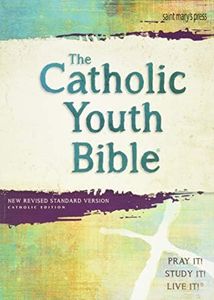
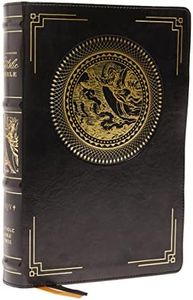
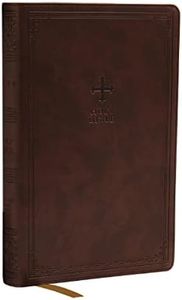

![NRSV Catholic Bible Journal Edition [Brown]: Holy Bible](https://images-proxy.bestreviews.guide/qFbpsH9u0vB-3dV7VomGJ5NxQjY=/0x300/https://m.media-amazon.com/images/I/21mFMzRdKuL._AC_CX679_.jpg)
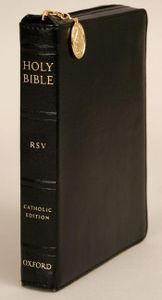
![Douay-Rheims Bible [Pocket size, black flexible cover]](https://images-proxy.bestreviews.guide/kZaYXbOzJ6nxqUOU9y8P1p3zrrM=/0x300/https://m.media-amazon.com/images/I/41C2gE9wdmL._AC_CX679_.jpg)
![NRSVue, Holy Bible With Apocrypha, Journal Edition, Comfort Print [Black]](https://images-proxy.bestreviews.guide/yA0Uzh1mIL2mw6zue6IFDu_xhbo=/0x300/https://m.media-amazon.com/images/I/41INXdRXZLL._AC_CX679_.jpg)
